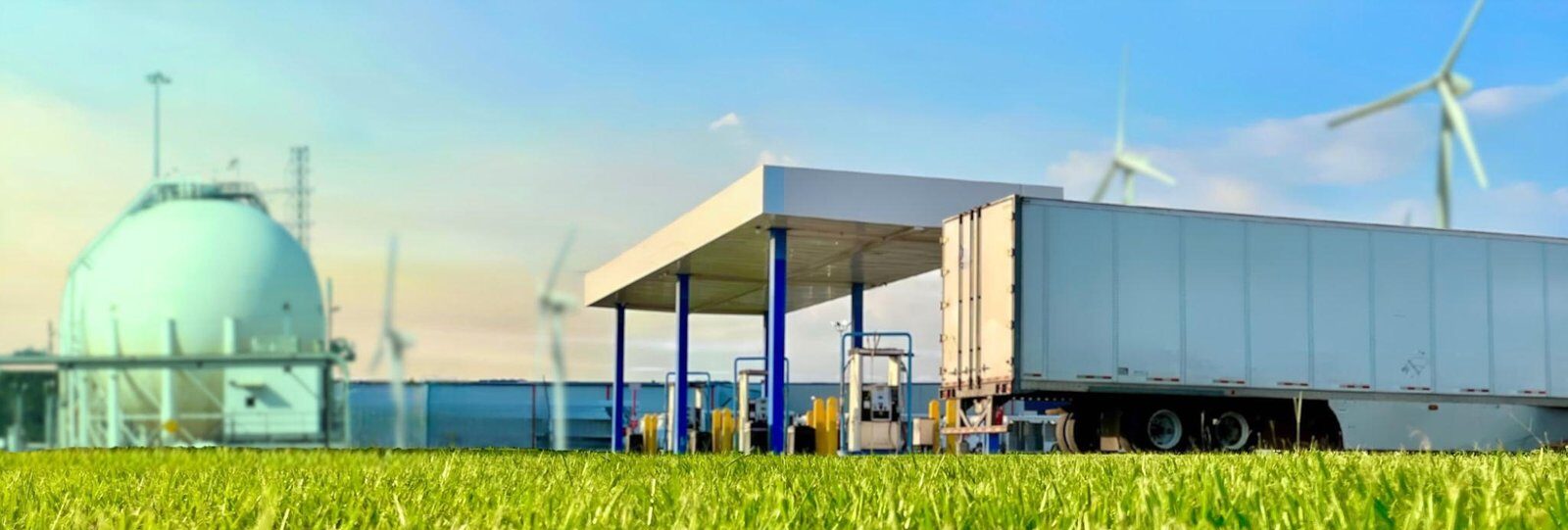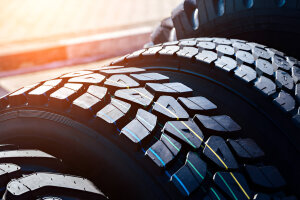Last Updated on August 28, 2024
Fuel Efficiency and Truck Tires
Fuel economy is the number one concern for truck owners since it directly affects operating and environmental expenses. This section focuses on how truck tires affect miles per gallon (MPG) performance, an aspect that is sometimes disregarded. We will analyze several tire varieties, construction methods, and upkeep procedures to investigate how the appropriate tires may significantly enhance a truck’s fuel economy and support more environmentally friendly operations.
Understanding MPG and Its Importance
The commonly used metric miles per gallon (MPG) expresses how effectively an automobile uses fuel by calculating the distance it can go for each gallon of fuel. Truck owners must understand and maximize MPG for several reasons. First, fuel expenses are significant for operating trucks, mainly for commercial use. Better fuel efficiency lowers these costs. Second, increased MPG is frequently linked to lower emissions, consistent with rising environmental awareness and legal requirements.
Fuel efficiency is influenced by several variables, such as tire performance, vehicle weight, driving behavior, and engine efficiency. MPG is essential for truck tires because it affects both the financial and environmental aspects of truck use.

The Role of Tires in Truck Performance
Although sometimes disregarded, tires have a significant but generally overlooked impact on a truck’s performance, especially fuel efficiency. Tires are essential for stability, control, and safety as the only point of contact between the car and the road. They also significantly decide how fuel-efficient a vehicle is.
- Tire Type and Fuel Efficiency: A vehicle’s fuel efficiency is significantly impacted by the kind and design of tires installed on it. Low-rolling resistance tires, for example, require less energy to roll, which improves fuel efficiency. The materials, tread pattern, and tire construction all affect rolling resistance and the energy used when the tire rolls under the car’s weight.
- Air Pressure and Fuel Efficiency: Tyres must be maintained at the proper pressure for fuel efficiency. Underinflated tires use more fuel because they increase rolling resistance. The U.S. Department of Energy states that fuel economy decreases by 0.2% for every one psi drop in tire pressure across the board. Maintaining proper tire pressure is an easy yet efficient method to increase MPG.
- Tread Patterns and Fuel Efficiency: The design of the tread pattern also influences fuel efficiency. Large tread patterns on off-road tires may improve traction under some circumstances but can significantly increase rolling resistance on normal roads. Additionally, tires with smoother tread patterns usually use less fuel on roads.
- Fuel economy and tire weight: Tire weight also impacts fuel economy. Heavier tires decrease fuel economy since they take more energy to move and stop. Tyre manufacturers are putting more effort into making their products lightweight without sacrificing strength or safety.
Types of Truck Tires and Their Impact on Fuel Efficiency
A truck’s tire selection affects more than compatibility and price; it also dramatically impacts the vehicle’s fuel economy. This section examines how tread patterns affect a truck’s fuel efficiency and the differences between standard and fuel-efficient tire models.
Standard Tires vs. Fuel-Efficient Models
Standard Tires: The design of conventional truck tires aims to combine traction, load capacity, and durability. They are usually built using more robust materials and deeper tread patterns to handle large loads and various road conditions. Although some applications may benefit from these features, they generally increase rolling resistance, reducing fuel efficiency.
Fuel-Efficient Models: Fuel-efficient or low rolling resistance (LRR) tires are designed to reduce energy loss as a tire rolls down the road.
Key features include:
- Its unique rubber formulations reduce rolling resistance without sacrificing grip.
- Reduced resistance with improved tread designs sometimes adapted to certain weather conditions or road types.
- The structure of sidewall designs minimizes tire deformation, which lowers the energy needed to keep the tire rolling.
- Fuel savings can be significant when LRR tires are used. Low rolling resistance tires can increase fuel efficiency by about 3%, according to the U.S. Environmental Protection Agency. Over time, this can result in significant cost savings, especially for commercial truck fleets.
Analyzing Tread Patterns and Their Effects
A truck tire’s rolling resistance and fuel economy are primarily determined by its tread design.
- Symmetrical Tread Patterns: These are the most common types on standard truck tires. They are versatile and provide balanced wear, noise, and traction performance. However, they may not be the most fuel-efficient option due to their design, which can increase rolling resistance.
- Asymmetrical Tread Patterns: These patterns combine different tread designs on the inner and outer portions of the tire, offering a good balance of grip and reduced rolling resistance. They are more commonly found in performance tires but are increasingly adopted in truck tires for fuel efficiency benefits.
- Directional Tread Patterns: Designed to roll in only one direction, these patterns effectively expel water and offer good traction in wet conditions. However, their complex design can lead to higher rolling resistance than more streamlined tread patterns.
- Ribbed Tread Patterns: This design is characterized by straight, circumferential grooves and is often used in fuel-efficient truck tires. Ribbed patterns are known for their low rolling resistance, allowing the tire to maintain a more consistent shape and reduce energy loss.
When selecting tires for a truck, it is essential to consider the type of tire and its tread pattern, as these directly impact fuel efficiency. While standard tires may be suitable for specific applications, fuel-efficient models can significantly save fuel costs, especially for trucks that cover long distances. Understanding the tread patterns and their effects on rolling resistance can also aid truck owners in making informed decisions that balance performance with fuel economy.
Proper Tire Maintenance for Enhanced MPG
Proper tire maintenance is a safety requirement and an essential factor in maximizing your truck’s fuel efficiency. This section will delve into the critical aspects of tire maintenance that can significantly impact MPG (miles per gallon).
Importance of Regular Tire Checks
Regular tire inspections are crucial for identifying potential issues before they become significant problems. These checks should include examining the tire tread for wear and damage, checking for any visible deformities or objects lodged in the tire, and ensuring the tires are free from cracks or bulges. Regular checks help maintain optimal tire condition, providing better fuel economy. Poor-condition tires can increase rolling resistance, thus reducing fuel efficiency.
Inflation: The Key to Optimal Performance
Proper tire inflation is the most significant factor in tire maintenance for fuel efficiency. Tires not inflated to the manufacturer’s recommended levels can lead to increased rolling resistance, which means the engine has to work harder and use more fuel to move the truck. According to the U.S. Department of Energy, under-inflated tires can lower gas mileage by about 0.2% for every one psi drop in the average pressure of all tires. Therefore, it is recommended to check tire pressure regularly – ideally once a month and before long trips.
Alignments and Rotations: Extending Tire Life
Regular alignments and tire rotations are essential for extending truck tire life. Alignments ensure tires are correctly angled, preventing uneven wear, while rotations help distribute wear evenly across all tires, maximizing their lifespan and maintaining optimal vehicle handling.
- Wheel Alignment: Proper wheel alignment is essential for the even wear of tires. Misaligned wheels can cause uneven and rapid tread wear, leading to a shorter tire life and decreased fuel efficiency. Regular alignment checks, as recommended by the vehicle manufacturer or if you notice symptoms like the truck pulling to one side, can ensure that tires wear evenly and last longer.
- Tire Rotation: Rotating tires at manufacturer-recommended intervals helps achieve uniform wear for all tires. This is important because uneven wear can negatively impact the truck’s stability and fuel efficiency. Regular rotation can extend the life of your tires, improve gas mileage, and ensure that your vehicle handles steadily and predictably under various driving conditions.
Innovations in Truck Tire Technology
The truck tire industry has been a focal innovation point, significantly impacting fuel efficiency and overall performance. This segment explores the latest advancements in truck tire technology, particularly the developments in rubber compounds and the advent of aerodynamic tires, which are setting new standards in the industry.
Advances in Rubber Compounds
One of the most significant innovations in truck tire technology is the development of advanced rubber compounds. These new compounds, which result from extensive research and development, enhance tire performance, including durability, traction, and fuel efficiency.
- Low Rolling Resistance Compounds: Modern rubber compounds are designed to reduce rolling resistance, which directly impacts fuel efficiency. These compounds balance flexibility and rigidity, allowing the tire to deform and recover efficiently during rotation. This reduces the energy lost in heat, thereby improving fuel economy.
- Longevity and Durability: Advances in rubber technology have also led to longer tires. This is achieved through compounds more resistant to wear and tear and degradation due to environmental factors. Longer-lasting tires mean fewer tire replacements, reducing costs and environmental impact.
- Temperature and Weather Adaptability: Modern rubber compounds are designed to perform optimally across various temperatures and weather conditions. This adaptability ensures consistent performance, safety, and efficiency, regardless of the driving environment.
Aerodynamic Tires and Their Benefits
The development of aerodynamic tires is a new area in truck tire technology. These tires’ aerodynamic features improve fuel efficiency by lowering air drag.
- Aerodynamic tires often have a streamlined shape, smoother sidewalls, and unique tread patterns. These features lower the tire’s air resistance, particularly at higher speeds.
- Aerodynamic tires reduce air drag, resulting in much lower fuel usage. This is especially useful for long-haul vehicles that spend much time on the highway, where aerodynamic efficiency is becoming more critical.
- In addition to increasing fuel efficiency, aerodynamic tires improve handling and stability. The reduced air resistance provides a more controllable driving experience, essential for heavy vehicles.
Eco-Friendly Driving Practices for Truck Owners
In light of increasing environmental concerns and the necessity for cost-effective operation, eco-friendly driving techniques are becoming increasingly crucial for truck owners. This section of our comprehensive handbook focuses on driving methods and approaches for increasing fuel economy and balance load efficiency, resulting in more sustainable and cost-effective truck operations.
Driving Techniques to Improve Fuel Economy
Improve vehicle fuel efficiency by practicing efficient driving methods, including maintaining constant speeds, avoiding sudden Acceleration and braking, and using highway cruise control. These methods decrease fuel usage and operating costs.
- Smooth Acceleration and Stopping: Sudden Acceleration can considerably raise fuel consumption. Smooth and growing Acceleration, as well as anticipatory braking, can help reduce fuel consumption. This method saves fuel while reducing wear and tear on the truck’s engine, brakes, and tires.
- Maintaining Consistent Speeds: Consistent speeds, particularly on highways, are more fuel efficient than varying speeds. Cruise control can help maintain a constant speed, boosting fuel economy when used appropriately.
- Optimal Gear Usage: Using the proper gear at the appropriate moment is essential for fuel-efficient driving. Higher ratios are usually more fuel-efficient, so moving up sooner will save petrol. However, this must be adjusted with the truck’s weight and road gradient to avoid engine strain.
- Avoiding Excessive Idling: Idling uses gasoline without traveling any distance. Reducing idle time, such as turning off the engine during long stops, can result in significant fuel savings.
Balancing Load and Efficiency
Balancing load and efficiency entails evenly distributing cargo weight, preventing overloading, and ensuring the truck is appropriately sized for its intended purpose. Proper load management improves fuel efficiency, lowers vehicle wear, and provides safe handling.
- Load Distribution: Even cargo weight distribution is essential for keeping the vehicle balanced and stable. Proper load distribution reduces engine strain while increasing fuel efficiency. Overloading or unequal loading can increase fuel consumption and pose safety risks.
- Weight Reduction: Carrying only what is necessary and removing unnecessary weight will enhance fuel economy. The larger the truck, the more fuel it takes to drive and maintain motion.
- Aerodynamics Optimization: Streamlining the truck’s appearance can reduce air resistance and improve fuel efficiency. This includes using aerodynamic elements such as roof, side skirts, and tail fairings to reduce drag.
- Regular Maintenance: Keeping the truck in good condition, including regular engine inspections, tire rotations, and alignments, assures best performance and fuel efficiency. Well-maintained automobiles use less fuel and have a lower environmental effect.
Selecting the Right Tires for Your Truck
Choosing the right tires for your truck impacts its performance, safety, and fuel efficiency. This section will guide you through the essential factors to consider when selecting tires and highlight some available fuel-efficient tire options.
Factors to Consider When Choosing Tires
When choosing truck tires, consider factors like tire size and load rating, tread pattern right for intended driving conditions, durability, and manufacturer reputation. These factors ensure the tires meet the specific needs of the truck and driving environment.
- Tire Type and Size: The tire should be the correct type and size for your truck’s specs and planned use. Whether you require all-season, all-terrain, or highway tires, each kind has unique features and trade-offs regarding grip, durability, and fuel efficiency. For best results, make sure the tire size matches the specifications of your truck’s wheels.
- Load Capacity and Speed Rating: It is critical to select tires that can support your truck’s weight and speed needs. The tire’s load capacity and speed rating should be sufficient to meet your truck’s maximum load and speed capabilities. Overloading tires can increase fuel consumption and pose safety issues.
- Tread Pattern: The tread pattern affects tire grip, handling, and fuel efficiency. Tires with a more extreme tread pattern may give better traction in off-road conditions but may affect fuel economy. In contrast, tires with a smoother tread pattern are often more fuel-efficient, particularly on highways.
- Rubber Composition and Rolling Resistance: A tire’s rubber composition can impact its durability, traction, and fuel efficiency. Low-rolling resistance tires enhance fuel efficiency by minimizing energy lost as heat while the tire rolls.
- Seasonal and Weather Considerations: Consider your area’s environment and usual weather conditions. If you frequently travel in snowy or icy weather, winter tires may be required for safety and performance.
- Brand and Warranty: Reputable companies often supply higher-quality tires with greater efficiency and endurance. Consider the warranty offered, as it can provide peace of mind and protection against problems.
Case Studies: Tires and Fuel Efficiency
The impact of tires on fuel efficiency is more than theoretical; real-world examples and customer testimonials demonstrate how the appropriate tires can significantly boost a truck’s fuel economy. This section focuses on case studies and customer experiences demonstrating the relationship between tires and fuel efficiency.

Real-Life Examples of Efficiency Improvement
Real-world examples of efficiency improvement in trucking include updating to more fuel-efficient engines, using aerodynamic designs, and using fuel-saving tires. These adjustments have significantly reduced many trucking businesses’ fuel usage and operating expenses.
- Long-Haul Trucking Firm Case Study: One prominent example is a long-haul trucking firm that converted its fleet to low rolling resistance (LRR) tires. The company reported a significant gain in fuel efficiency, with an average 3% increase in miles per gallon throughout its fleet. This increase resulted in substantial annual fuel savings, demonstrating the direct impact of tire selection on fuel efficiency.
- Municipal Fleet Case Study: As part of an environmental drive, a city fleet replaced its conventional tires with more fuel-efficient options. The result was a 2% boost in overall fuel economy, reducing fuel expenses and carbon emissions. This case study shows how fuel-efficient tires may be used effectively in various trucking applications, including urban environments.
- Independent Truck Owner Case Study: An independent truck owner reported a vast improvement in MPG after switching to aerodynamic and fuel-efficient tires. The change not only resulted in fuel cost savings but also extended tire life due to reduced wear, further enhancing the overall cost-effectiveness of the investment.
Testimonials from Tires Easy Truck Customers
Testimonials from customers of Tires Easy Truck frequently highlight the improved fuel efficiency, extended tire life, and enhanced road grip provided by their products. Users often report significant cost savings and a noticeable improvement in driving experience.
- Customer Testimonial on LRR Tires: A customer of Tires Easy Truck, who operates a regional delivery service, praised the LRR tires purchased from the company. They noted an improvement in fuel economy that exceeded their initial expectations and a noticeable difference in tire durability.
- Testimonial on Improved Handling and Efficiency: Another customer highlighted the dual benefits of their new tires — enhanced fuel efficiency and improved handling. They emphasized that the tires performed exceptionally well in various weather conditions, contributing to safer and more economical operations.
- Feedback on Cost Savings and Performance: A long-term customer shared their experience of switching their entire fleet to tires recommended by Tires Easy Truck. The move led to a marked reduction in fuel costs, with the added benefit of reduced tire replacement frequency, testifying to the long-term economic and environmental benefits of choosing the right tires.
Proper tire selection is crucial for a large fleet or an individual owner-operator in achieving optimal fuel economy and operational efficiency.
Conclusion & Recommendations
As we conclude our in-depth investigation of fuel efficiency and truck tires, it’s essential to evaluate the lessons learned and the direction of this critical area of trucking.
This guide’s main takeaway is that tires significantly impact a truck’s fuel efficiency. We’ve seen how implementing eco-friendly driving habits, keeping up with maintenance, and selecting the appropriate tires can dramatically affect fuel efficiency. The evidence is overwhelming: the correct tires reduce fuel consumption and enhance truck operations’ sustainability and economic viability. Developments in rubber compounds, the creation of aerodynamic tires, real-world case studies, and customer testimonies demonstrate this.
The future of truck fuel efficiency appears bright, thanks to ongoing advancements in tire technology and a growing emphasis on environmental sustainability. Because of technical improvements and regulatory pressure to cut emissions, developing more sophisticated, fuel-efficient, and environmentally friendly tires is anticipated to continue. As this evolves, tires will probably play a more significant role in how environmentally friendly and efficient trucks are.
Truck owners and operators must be knowledgeable and proactive in their tire selection and upkeep procedures in light of these observations. Knowing and using the concepts covered in this guide can significantly improve fuel economy, performance, and environmental impact, whether you’re an owner-operator or managing a fleet.
Find the ideal tires for your needs at Tires Easy Truck.
To embark on this journey of enhanced fuel efficiency and performance, we invite you to explore the options available at Tires Easy Truck. With a wide range of top-quality, fuel-efficient tires tailored to meet the diverse needs of truck operators, Tires Easy Truck is your partner in optimizing your truck’s performance. Our expert team is dedicated to helping you find the perfect match for your vehicle, ensuring you reap the benefits of the latest tire technology.
Take the first step towards a more fuel-efficient future for your truck. Explore our selection and find the ideal tires at Tires Easy Truck that fit your needs. Click here to enhance your truck’s performance and fuel efficiency today!
By staying at the forefront of tire technology and best practices, together, we can drive towards a more efficient, sustainable, and profitable future in trucking.
FAQs
Do truck tires affect gas mileage?
Yes, truck tires significantly affect gas usage. The type, tread pattern, and inflation of tires can influence rolling resistance, which affects fuel efficiency. Properly maintained tires optimized for low rolling resistance can enhance gas mileage.
How much mpg will I lose with bigger tires?
Using bigger tires can decrease MPG, as they often increase rolling resistance and weight. The exact losses differ, but a general estimate is a 1-3% reduction in fuel efficiency for every inch increase in tire diameter.
Does lifting a truck affect MPG?
Lifting a truck can affect MPG negatively. The increased height creates more wind resistance, and if larger tires are used, they can further decrease fuel efficiency due to more excellent rolling resistance.
What affects gas mileage in a truck?
Gas usage in trucks is affected by aerodynamics, engine efficiency, driving habits, weight, and tire choice. Tires with high rolling resistance or improper inflation, rough driving, and excess weight can all lower gas usage.
How do truck tires affect gas mileage?
Truck tires impact gas mileage through their rolling resistance. Tires with higher rolling resistance make the engine work harder, using more fuel. Proper inflation and choosing tires with low rolling resistance can improve gas usage.
How is MPG related to fuel efficiency?
MPG, or miles per gallon, is a direct measure of fuel efficiency. It shows the distance a truck can travel on a gallon of fuel. Higher MPG means greater fuel efficiency, indicating more distance covered per gallon of fuel used.
What is an excellent strategy to maximize fuel efficiency?
To maximize fuel efficiency, maintain proper tire pressure, use low-rolling-resistance tires, adopt smooth driving habits, reduce idle times, and remove unnecessary weight. Regular engine maintenance and aerodynamic modifications can also help.











 English
English Français
Français Español
Español